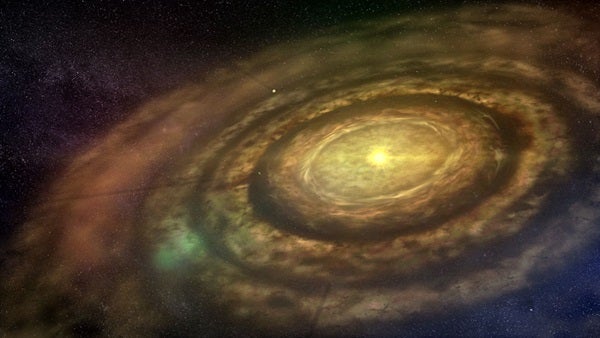A research team led by Lars A. Buchhave from the University of Copenhagen in Denmark studied the elemental composition of more than 150 stars harboring 226 planet candidates smaller than Neptune.
“I wanted to investigate whether small planets needed a special environment in order to form, like the giant gas planets, which we know preferentially develop in environments with a high content of heavy elements,” said Buchhave. “This study shows that small planets do not discriminate and form around stars with a wide range of heavy metal content, including stars with only 25 percent of the Sun’s metallicity.”
Astronomers refer to all chemical elements heavier than hydrogen and helium as metals. They define metallicity as the metal content of heavier elements in a star. Stars with a higher fraction of heavy elements than the Sun are considered metal-rich. Stars with a lower fraction of heavy elements are considered metal-poor.
Planets are created in disks of gas and dust around new stars. Planets like Earth are composed almost entirely of elements such as iron, oxygen, silicon, and magnesium. The metallicity of a star mirrors the metal content of the planet-forming disk. Astronomers have hypothesized that large quantities of heavy elements in the disk would lead to more efficient planet formation. It has long been noted that giant planets with short orbital periods tend to be associated with metal-rich stars.
Unlike gas giants, the occurrence of smaller planets is not strongly dependent on the heavy element content of their host stars. Planets up to four times the size of Earth can form around stars with a wide range of heavy element content, including stars with a lower metallicity than the Sun.
“Kepler has identified thousands of planet candidates, making it possible to study big-picture questions like the one posed by Lars. Does nature require special environments to form Earth-size planets?” said Natalie Batalha from NASA’s Ames Research Center at Moffett Field, California. “The data suggest that small planets may form around stars with a wide range of metallicities — that nature is opportunistic and prolific, finding pathways we might otherwise have thought difficult.”
The ground-based spectroscopic observations for this study were made at the Nordic Optical Telescope on La Palma in the Canary Islands; Fred Lawrence Whipple Observatory on Mt. Hopkins in Arizona; McDonald Observatory at the University of Texas at Austin; and W.M. Keck Observatory atop Mauna Kea in Hawaii.










